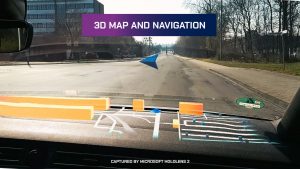Microsoft and Volkswagen innovating futuristic driving experience
Microsoft and Volkswagen are joining forces to drive the next wave of innovation in the automotive industry. Microsoft’s HoloLens 2 and Mixed Reality technology could be the key to unlocking your futuristic driving experience. While self-driving cars have become a familiar sight on the roads, their technology is far from flawless, with occasional accidents and rogue self-driving incidents still occurring. Even with self-driving capabilities, these cars require active driver supervision and are not yet considered fully autonomous rides.
The question remains: will we ever witness fully autonomous cars? In the interim, Microsoft and Volkswagen are collaborating on the next evolution of driving, where Mixed Reality and Holograms will replace traditional screens and physical buttons, elevating road safety for all. This is largely achievable thanks to the innovative moving platform feature of the HoloLens. (For more details on this feature, be sure to read our dedicated blog post.) Prior to this breakthrough, using mixed reality and holograms under dynamic conditions led to unstable and shaky experiences.

With the new moving platform feature, all pertinent information is presented within drivers’ field of view, allowing them to keep their eyes on the road. GPS directions, climate controls, and the speedometer will be projected in front of drivers, minimizing the need to glance away. Rather than grappling with confusing GPS directions or looking down at a screen, drivers will have directions seamlessly integrated into their field of view. Adjusting speed or temperature settings can now be accomplished without diverting their attention from the road.

However, the potential of mixed reality and holographic overlays extends far beyond enhancing drivers’ focus on the road. The project encompasses vital warnings, such as alerting drivers to the presence of pedestrians on the road. We can envision other scenarios, including a nighttime driving mode that aids visibility in the dark and issues warnings accordingly. Furthermore, existing safety features like blind spot warnings will be bolstered by this technology, ultimately elevating safety for everyone on the road.
In a scene reminiscent of the movie “Black Panther,” this technology could enable a remote driver to intervene when necessary. Cameras will monitor drivers, determining if they are capable of safely operating the vehicle. Should the need arise, an automatic switch would allow a remote driver to bring the car to a halt and guide it to safety, safeguarding all road users. This technology’s application isn’t limited to automotive vehicles; it extends to planes and boats as well.
While this project isn’t yet market-ready, its potential is undeniably vast, promising to make daily driving more convenient and safer for everyone.


